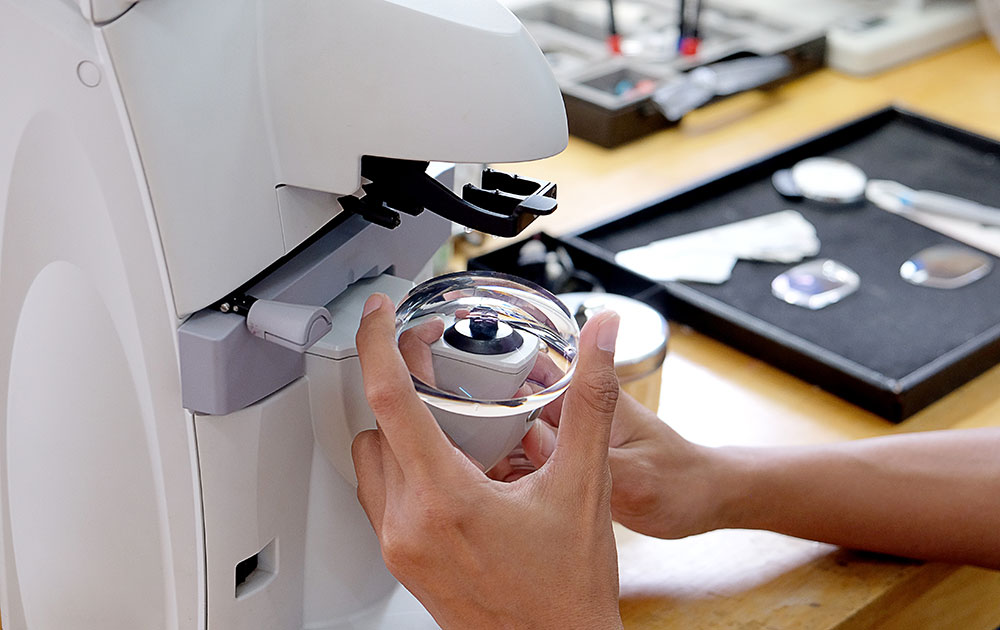
It’s hard not to admire the flawlessness of brand-new eyeglasses tucked safely inside their cases; untouched, they glimmer without a scratch or speck of dust in sight. It’s even harder not to admire the finesse of the Optical Laboratory Technicians whose precise assembly creates these perfect pairs of glasses as well as contact lenses and other optical equipment like telescope lenses. If you’ve ever wondered what it’s like to spend a day assembling optical devices in a lab, read on.

Optical Labs, manufacturing facilities regulated by the Occupational Safety and Health Administration (OSHA), are meticulously maintained for cleanliness and safety of staff. They are bright, sterile facilities that produce essential medical devices, so throughout production, technicians must abide by all safety protocols and wear safety equipment such as goggles, gloves, and face shields. Lab technicians are often trained on the job, but they also may receive training from technical institutes or certificate programs at small colleges. Associates degrees in related fields, including CAD drafting, visual arts, and mathematics and physical science, are also common.
Optical Labs have different stations, and technicians are assigned to each station on a rotating schedule, typically rotating shifts between stations throughout the day. Each station performs a discrete task that makes up part of the assembly process, which includes selection, production, assembly, and quality control. The separation of the stations provides the necessary checks and balances to prevent imperfections or errors during the manufacturing process.
Selection
A lab technician selects the components that will come together as a pair of glasses, including a lens blank that matches the ordered prescription and the chosen frame. A lens blank is rough, opaque glass piece that is of a similar size, shape, and composition as the prescribed lens. The technician will inspect the lens blanks for flaws, prepare baskets with each order, and then validate that the baskets correspond with the specifications before they’re sent on to production.
Production
A lab technician cuts, grinds, and trims the lens blanks by operating precision machinery, which can include different degrees of manual operation and automation.
Assembly
A lab technician polishes, bevels, coats, and edges the lenses until they’re perfectly smoothed and fitted to the frame. Before putting together the lenses and frame, the technician thoroughly inspects the finished lenses with precision instruments to ensure that they conform to standards and specifications. If the lenses pass muster, then the technician puts together the lenses and frame along with ancillary pieces such as the hinges, screws, and nose pads.
Quality Control
At least one lab technician performs final quality control checks of the fully assembled product, inspecting the glasses to determine whether they have been crafted in accordance with all required standards, such as those mandated by the Federal Drug Administration (FDA) and suggested by the American National Standards Institute (ANSI) and International Organization for Standardization (ISO). Once the final product passes quality control inspection, it is packaged for the patient or consumer.
The role of an optical lab technician requires incredible dexterity, concentration, attention to detail, and computer and machine skills. It is a methodical position that allows millions of people throughout the country to see clearly every day.
Allentown Optical appreciates the diligent effort our technicians put into each pair of glasses or contacts, and we pride ourselves on the perfection of our products. We encourage you to take advantage of our optical lab to give your patients an optimal experience. For more information, please contact us.

